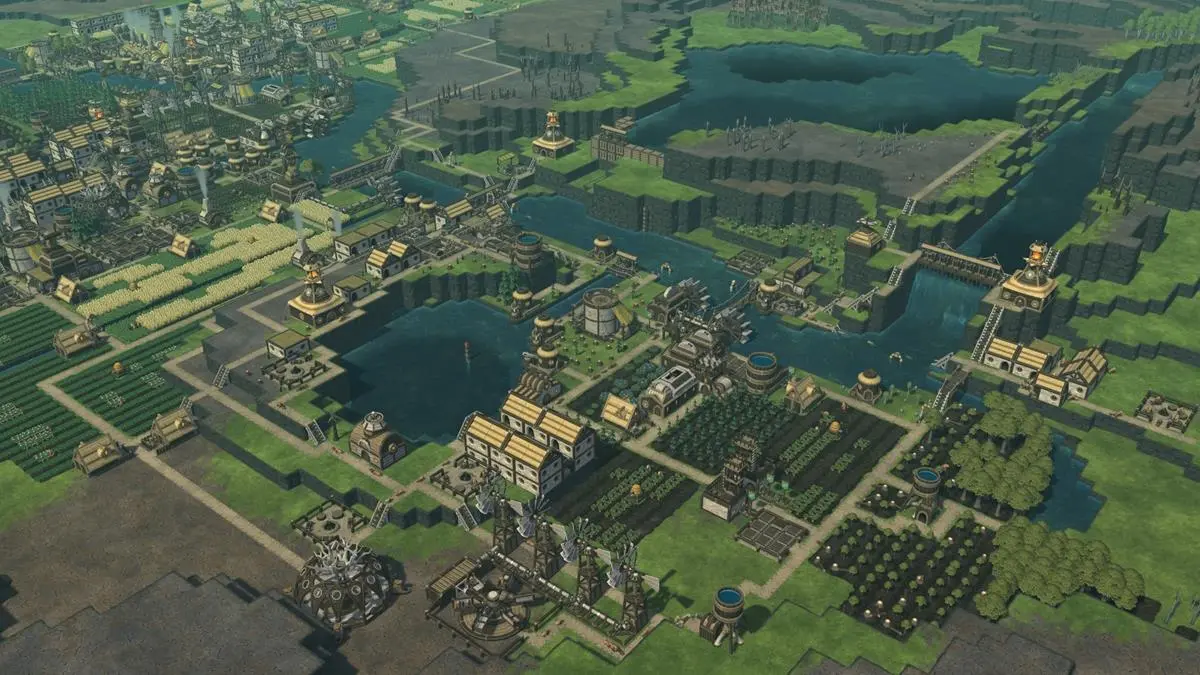Your community of beavers in Timberborn will need to make use of natural resources. Specifically, you’ll have to ensure that the rivers continue to flow smoothly, irrigating nearby lands to make them arable. Of course, it’s also possible to divert water or use hydroelectric energy to power up your own structures. Here’s our guide to help you use dams, waterways, and dynamite in Timberborn.
Timberborn guide: How to use dams, waterways, and dynamite
The first thing you’ll need to learn about Timberborn is that, much like in real life, water will flow from higher ground to lower ground. You can see this ever so slightly by looking at tile elevations on the map. With this in mind, you can take note of where your first village is located. In most cases, your map seed will mean that you’re further down in the lowlands.
Next, take a look at the Landscaping tab. At the start of your Timberborn run, only dams are available. Later, though, you can spend science to unlock new structures. These include levees, floodgates, and more.

Dams vs. levees vs. floodgates
While dams block off the flow of water, there’s a bit of overspilling that occurs. Compared to a dam, levees will completely block water from coming in. You can see this mechanic in the image above. The river will still continue to rush in even when there’s a dam. But, a levee will completely enclose that section. Beware, though, because these structures can also cause flooding if you’re not careful. In any case, our main goal here is simple: create an enclosed body of water that won’t be affected by droughts. Dams and levees are cost-efficient in this regard.
Next up are the floodgates. There are three kinds with the triple floodgate being the tallest structure. Compared to dams and levees that have a default height per block, while also allowing you to build an object on top of them, floodgates have a control mechanism. Depending on the floodgate’s size, you can control the height (i.e., when water is allowed to flow through).
You can see two examples in the images below showing the Triple Floodgate. At a height of two, the slats are still open. But, at a height of three (its maximum), the slats are fully closed.
Keeping the rivers flowing for water wheels
Another factor that you’ll want to remember in Timberborn is how you can use waterways as a source of power. You’re going to need water wheels for this (seen in the Power tab). Available by default, water wheels are placed on the river. You’ll then need to attach power shafts from one of its sides all the way to any structure that needs power. For instance, you might want to do this for the carousel and other objects that increase well-being.
Bear in mind that the water wheel will generate power as long as the river keeps flowing. If you dam it up on both ends, the water wheel will stop running and you’ll probably experience a flood, too. You may place several blocks for the dam or levee, but leave one spot open so water can still rush through.

Natural barriers and blowing up the landscape with dynamite
Every generated map in Timberborn will have natural barriers that block the flow of rivers. You’ll need to click on the Demolish tab and mark them down. Your workers will then make their way there to remove the obstacles.

You can also cause some beaver-made destruction by using dynamite. First, you need to unlock the explosives factory in the Landscaping tab. Then, you’ll need 30x gears, timber, and metals just to build it. Next, you need to churn three pieces of paper to make a single stick of dynamite.
Ideally, you’ll want to place these on elevated land that prevents water from flowing in. Once you plop these down, click on the detonate button. Remember that each stick of dynamite will only blow up a single tile, so you’re going to need a lot of these. With several dynamites in Timberborn that blow up in sync, you might be able to create your own Timberlake. Okay, we’ll stop before people start throwing tomatoes.










Published: Sep 19, 2021 10:40 am